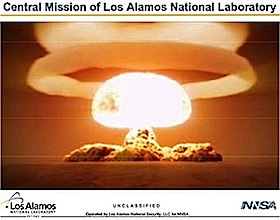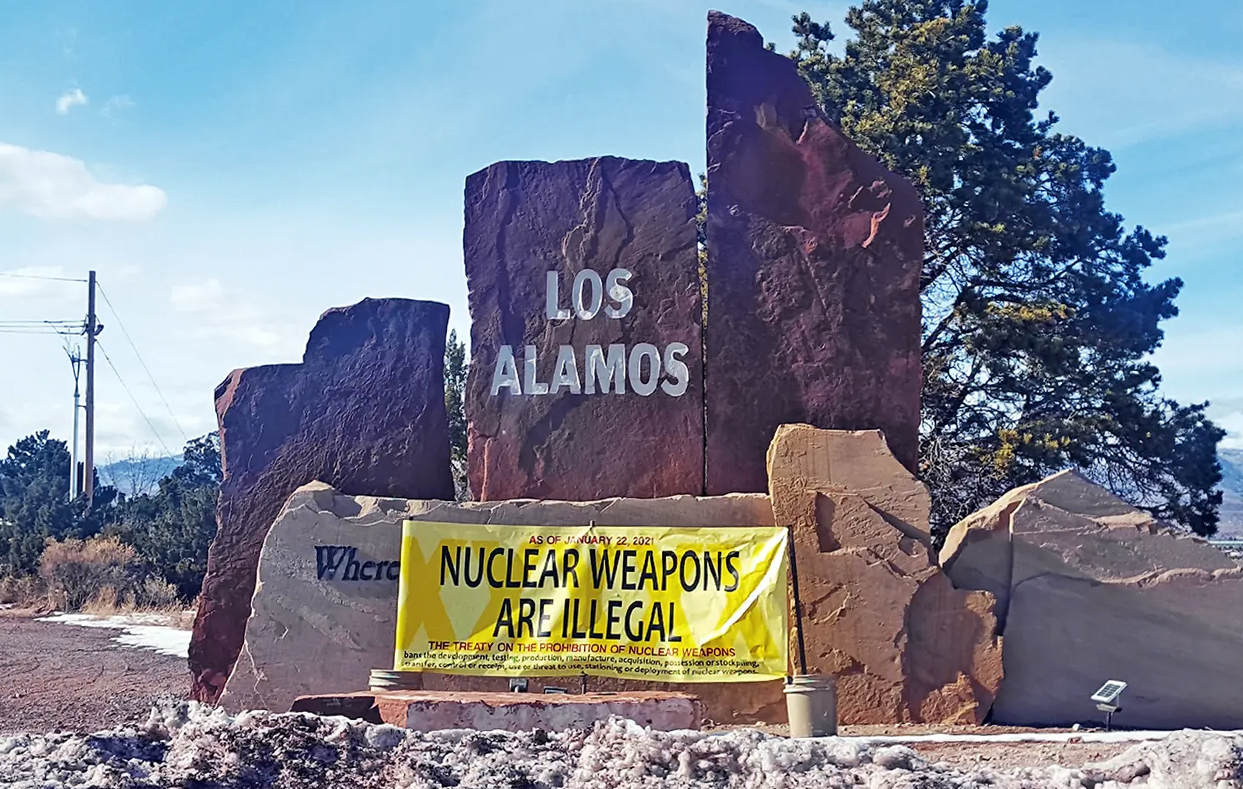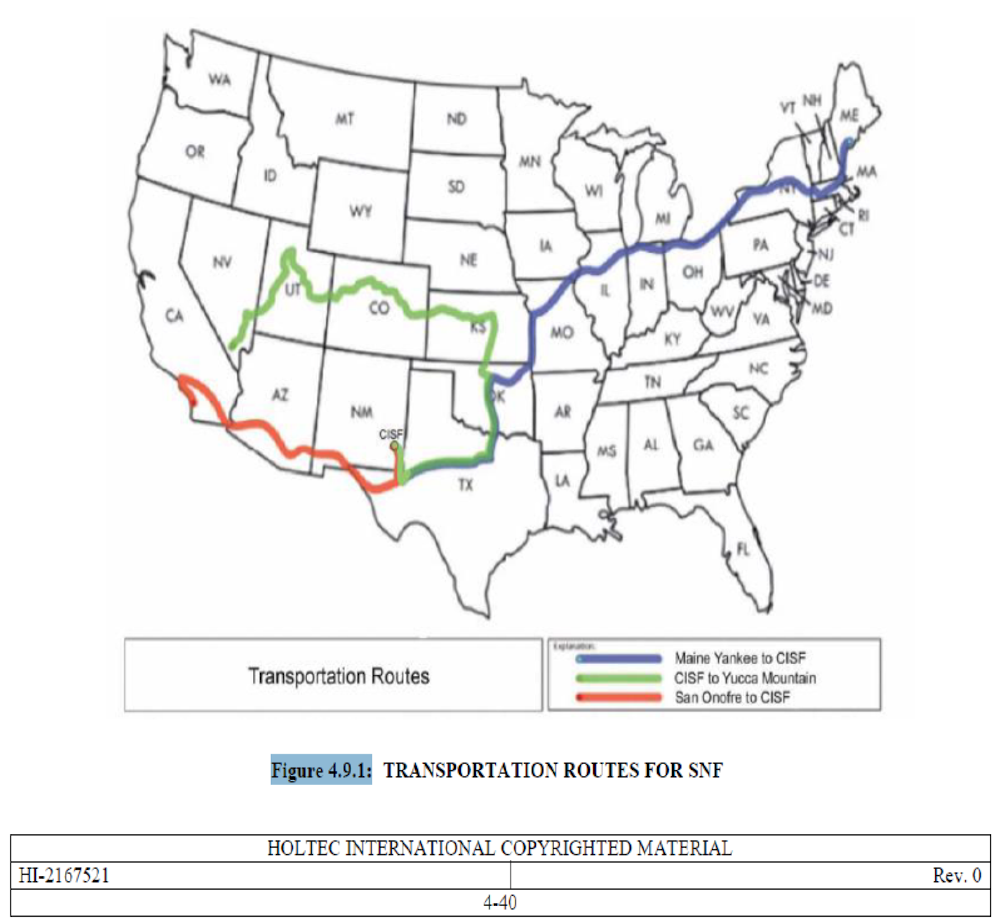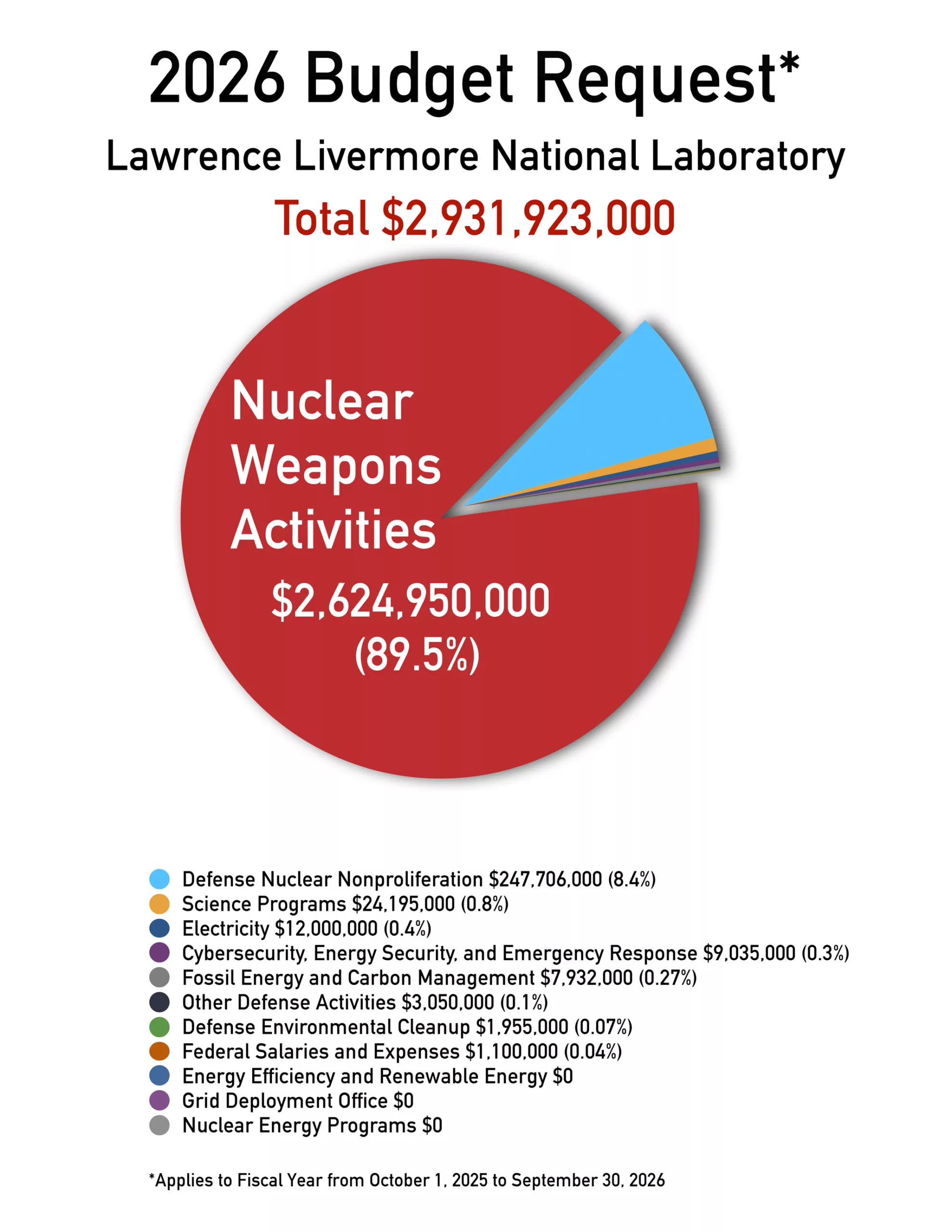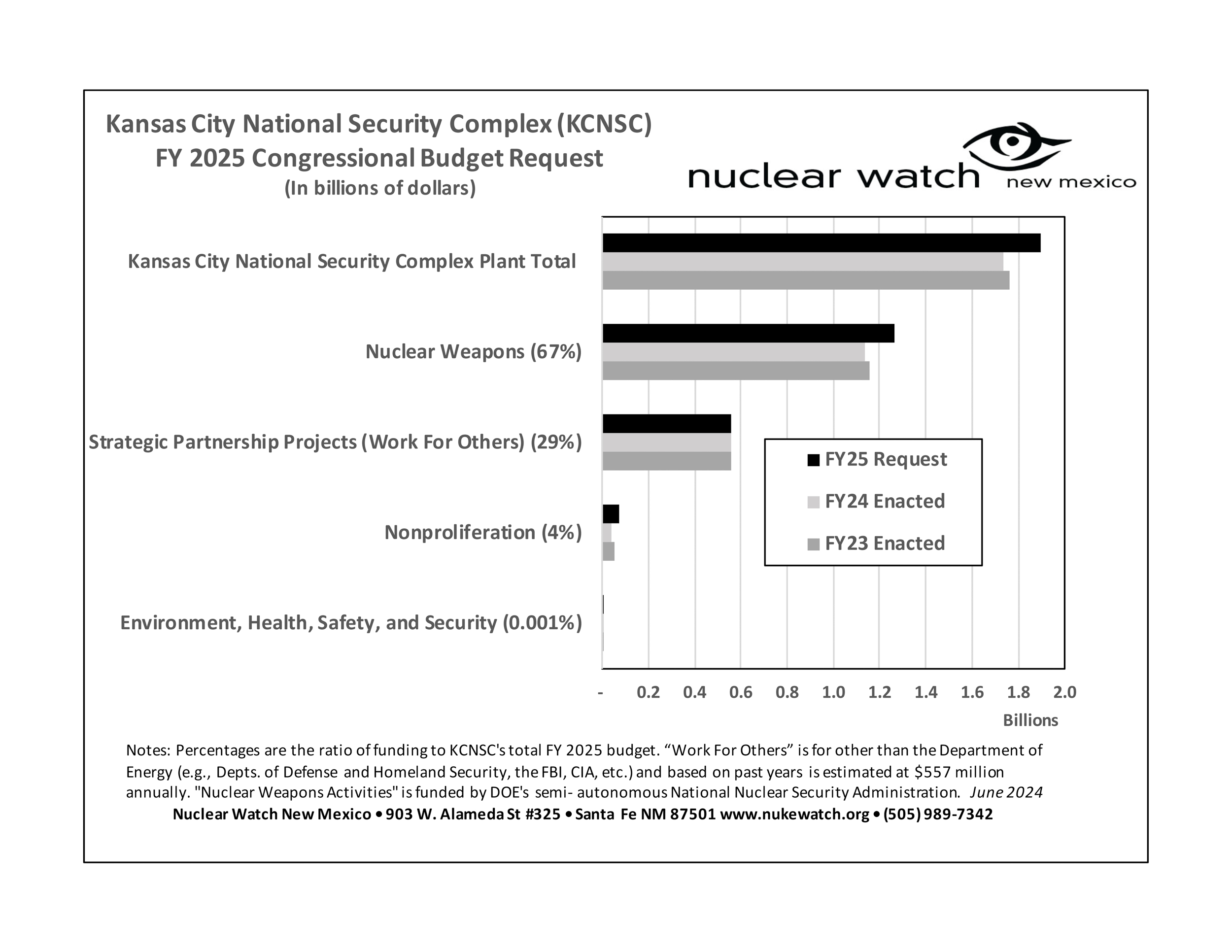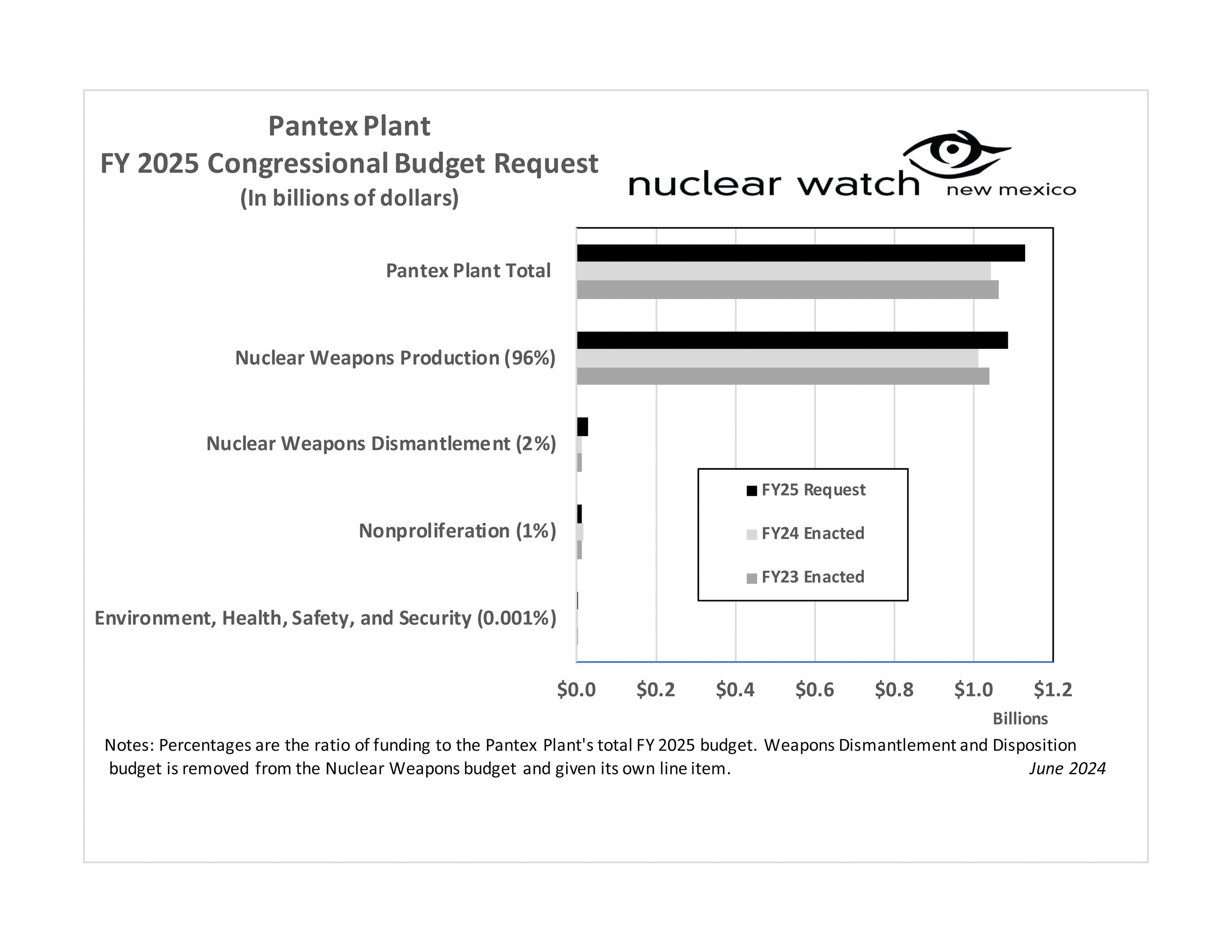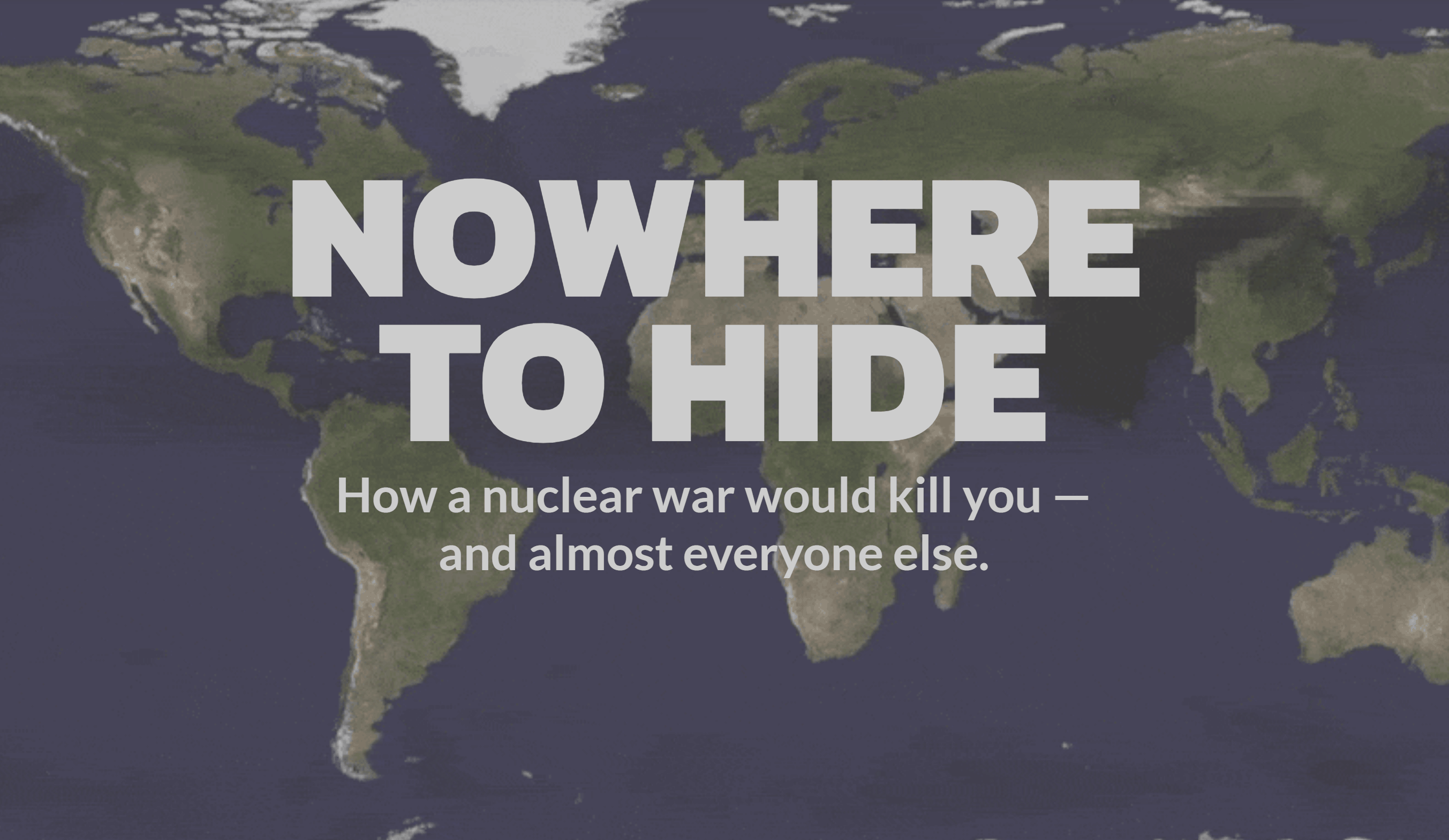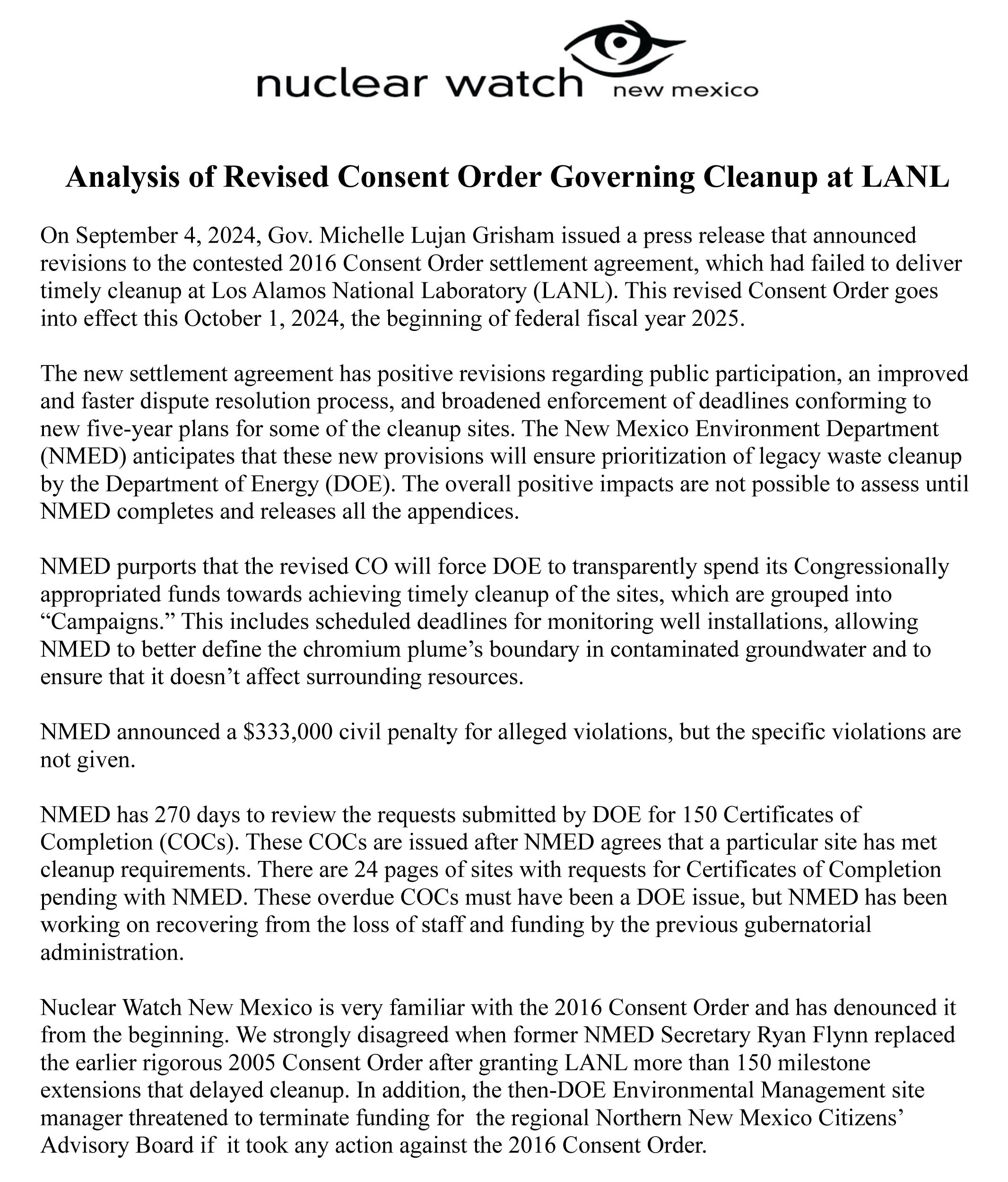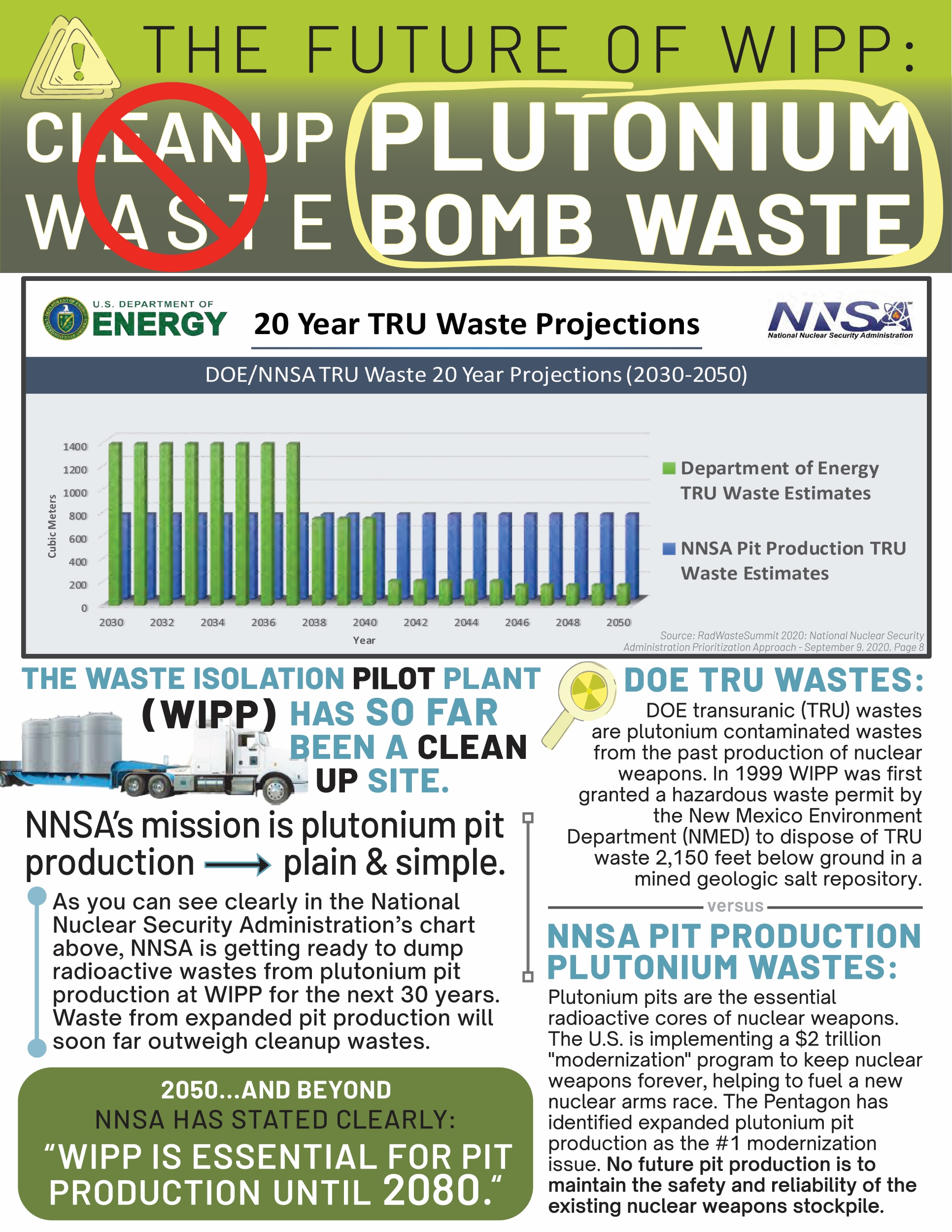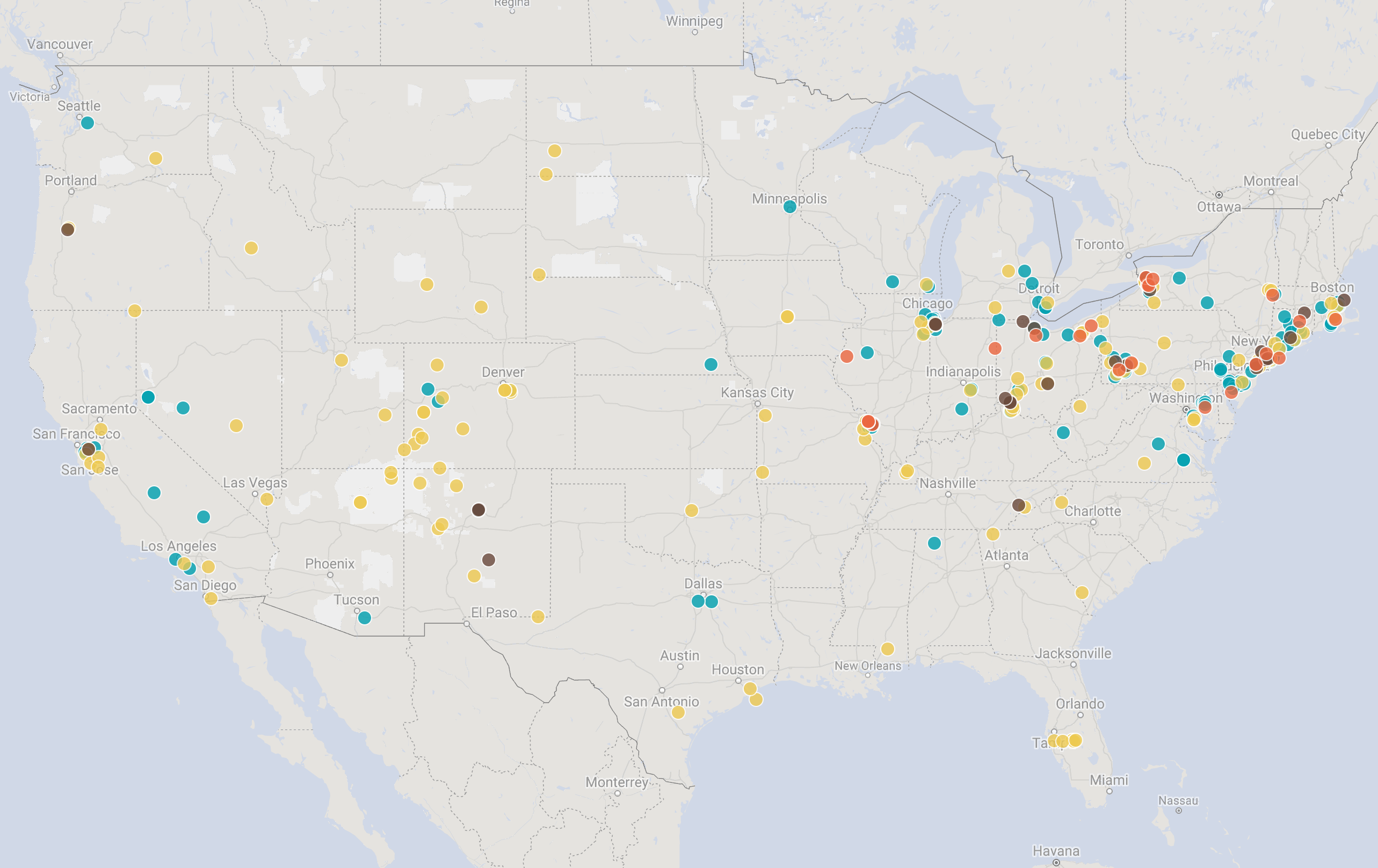QUOTE OF THE WEEK
Nothing Found
It seems we can’t find what you’re looking for. Perhaps searching can help.
LANL’s Central Mission: Los Alamos Lab officials have recently claimed that LANL has moved away from primarily nuclear weapons to “national security”, but what truly remains as the Labs central mission? Here’s the answer from one of its own documents:
LANL’s “Central Mission”- Presented at: RPI Nuclear Data 2011 Symposium for Criticality Safety and Reactor Applications (PDF) 4/27/11
Banner displaying “Nuclear Weapons Are Now Illegal” at the entrance in front of the Los Alamos National Lab to celebrate the Entry Into Force of the Nuclear Weapon Ban Treaty on January 22, 2021
Nothing Found
It seems we can’t find what you’re looking for. Perhaps searching can help.
Follow the Money!
Livermore FY26 Budget Request (Courtesy of Tri-Valley CAREs)
Map of “Nuclear New Mexico”
In 1985, US President Ronald Reagan and Russian President Mikhail Gorbachev declared that “a nuclear war cannot be won and must never be fought.”

NEW & UPDATED
Santa Fe County commissioners object to environmental finding on LANL power line
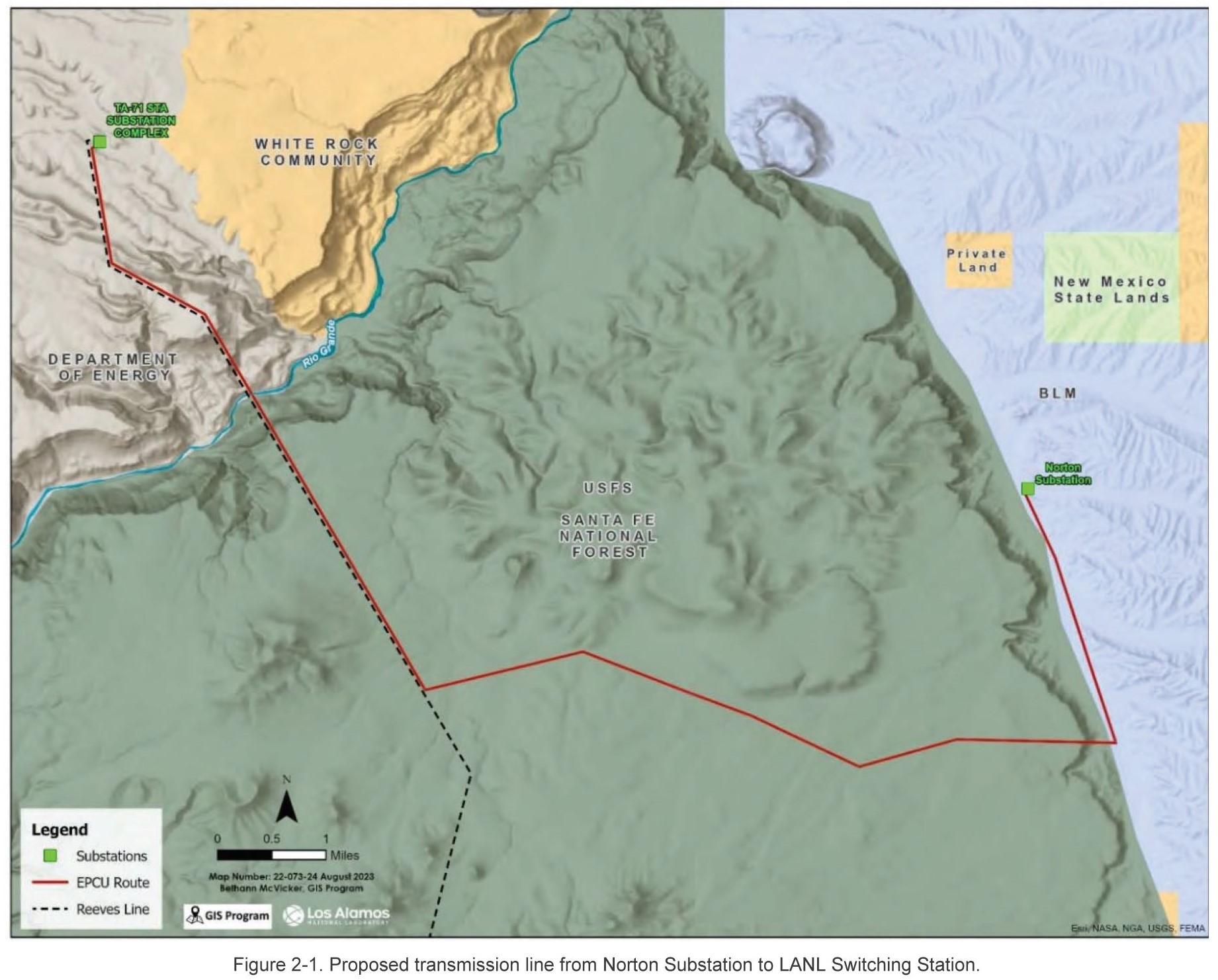
“‘This is sacred land. We have alternatives. There are other ways to do this,’ said Commissioner Camilla Bustamante. ‘I couldn’t be in more support of finding an alternative to taking a power line and putting a scar on something that is not equal to just any other physical location.'”
By Cormac Dodd, Santa Fe New Mexican | October 8, 2024 santafenewmexican.com
Court Rules U.S. Nuclear Weapons Production Plan Violates Federal Law
On September 30, United States District Court Judge Mary Geiger Lewis ruled that the United States Department of Energy (“DOE”) and its semi-autonomous nuclear weapons agency, the National Nuclear Security Administration (“NNSA”), violated the National Environmental Policy Act (“NEPA”) by failing to properly consider alternatives before proceeding with their plan to produce plutonium pits, a critical component of nuclear weapons, at the Los Alamos National Laboratory (“LANL”) in New Mexico and, for the first time ever, at the Savannah River Site (“SRS”) in South Carolina.
The Court found that the plan’s purpose had fundamentally changed from NNSA’s earlier analyses which had not considered simultaneous pit production at two sites. These changes necessitated a reevaluation of alternatives, including site alternatives, which Defendants failed to undertake prior to moving forward while spending tens of billions of taxpayers’ dollars. Therefore, the Court entered judgment in favor of Plaintiffs, the nonprofit public interest groups Savannah River Site Watch, Nuclear Water New Mexico and Tri-Valley Communities Against a Radioactive Environment (CAREs); the Gullah/Geechee Sea Island Coalition; and Tom Clements as an individual plaintiff.
As a result of this ruling, the Defendants are required to newly assess pit production at a nation-wide programmatic level which will mean undertaking a thorough analysis of the impacts of pit production at DOE sites throughout the United States, including radioactive waste generation and disposal. Under the National Environmental Policy Act (NEPA), this will provide the opportunity for public scrutiny of and formal comment on their assessments.
Court Rules U.S. Nuclear Weapons Production Plan Violates Federal Law
FOR IMMEDIATE RELEASE, October 3, 2024
Media Contacts:
Ben Cunningham, Esquire, SCELP, 843-527-0078, ben@scelp.org
Tom Clements, Savannah River Site Watch, 803-834-3084, tomclements329@cs.com
Jay Coghlan, Nuclear Watch New Mexico, 505-989-7342, jay@nukewatch.org
Scott Yundt, Tri-Valley CAREs, 925-443-7148, scott@trivalleycares.org
Queen Quet, Gullah/Geechee Sea Island Coalition, 843-838-1171, GullGeeCo@aol.com
AIKEN, S.C. — On September 30, United States District Court Judge Mary Geiger Lewis ruled that the United States Department of Energy (“DOE”) and its semi-autonomous nuclear weapons agency, the National Nuclear Security Administration (“NNSA”), violated the National Environmental Policy Act (“NEPA”) by failing to properly consider alternatives before proceeding with their plan to produce plutonium pits, a critical component of nuclear weapons, at the Los Alamos National Laboratory (“LANL”) in New Mexico and, for the first time ever, at the Savannah River Site (“SRS”) in South Carolina.
The Court found that the plan’s purpose had fundamentally changed from NNSA’s earlier analyses which had not considered simultaneous pit production at two sites. These changes necessitated a reevaluation of alternatives, including site alternatives, which Defendants failed to undertake prior to moving forward while spending tens of billions of taxpayers’ dollars. Therefore, the Court entered judgment in favor of Plaintiffs, the nonprofit public interest groups Savannah River Site Watch, Nuclear Water New Mexico and Tri-Valley Communities Against a Radioactive Environment (CAREs); the Gullah/Geechee Sea Island Coalition; and Tom Clements as an individual plaintiff.
As a result of this ruling, the Defendants are required to newly assess pit production at a nation-wide programmatic level which will mean undertaking a thorough analysis of the impacts of pit production at DOE sites throughout the United States, including radioactive waste generation and disposal. Under the National Environmental Policy Act (NEPA), this will provide the opportunity for public scrutiny of and formal comment on their assessments.
The Energy Department just made one plutonium pit. Making more is uncertain
Coinciding with NNSA’s announcement of the first diamond-stamped pit, a US District Court ruled that the Energy Department and the NNSA violated the National Environmental Policy Act (NEPA) by failing to properly consider alternatives before proceeding with pit production, requiring the agency to conduct a programmatic environmental impact assessment.
This was a victory for transparency and the community groups—among them, Savannah River Site Watch, Nuclear Watch New Mexico, Tri-Valley Communities Against a Radioactive Environment (CAREs), and the Gullah/Geechee Sea Island Coalition—who, for years, have been asking for such an assessment.
By Dylan Spaulding, The Bulletin of Atomic Scientists | October 10 thebulletin.org
Two conflicting developments arose this month in US efforts to produce new plutonium pits for its nuclear weapons: The National Nuclear Security Administration (NNSA) announced it had produced a warhead-ready pit—the explosive core of a nuclear weapon—for the first time in decades, and a federal court ruled that NNSA will be required to consider the cumulative environmental and health impacts of its pit production program.
Overshadowing these events is a vigorous debate over the necessity for new pits at all. Previous analyses have found that plutonium pits have viable lifespans well beyond the expected service life of the current stockpile, whereas production of pits for new weapons is part of a sweeping US nuclear modernization that raises concern over the future of arms control and any possibility for stockpile reductions at a time of deteriorating international relations.
Continue reading
Judge finds plutonium production plans violated environmental laws
Both sides of the case are ordered to present a joint plan to address violations by Oct. 25
One of the plaintiffs, Jay Coghlan, the executive director of Nuclear Watch New Mexico called that a “pretty large hurdle to overcome,” for both parties. It’s unclear what happens if the parties fail to present a joint solution.
By: Danielle Prokop – Source NM | October 8 sourcenm.com
U.S. energy officials illegally neglected to study impacts to the environment in efforts to increase plutonium production for nuclear weapons in New Mexico and South Carolina, a federal judge has ruled.
South Carolina District Court Judge Mary Geiger Lewis sided with environmental, anti-nuclear proliferation and community groups last week who sued the National Nuclear Security Administration (NNSA), which oversees the nuclear weapons stockpile as part of the U.S. Department of Energy.
The U.S. is investing billions into restarting the manufacture of plutonium “pits,” the grapefruit-sized spheres developed for nuclear weapons. The federal government halted its manufacturing program at the Rocky Flats Plant in Colorado in 1989 after an FBI raid due to safety concerns and environmental crimes.
The stated goal has been to produce 80 pits per year starting in 2030, split between Savannah River facility proposed in South Carolina and at Los Alamos National Laboratory in New Mexico. The project has faced safety concerns and delays. The Government Accountability Office, a federal watchdog agency, found the NNSA had no comprehensive timeline or cost estimate for pit production, but estimates it’s in the tens of billions of dollars.
Community, environment and anti-nuclear groups brought the lawsuit in 2021, alleging that the NNSA failed to consider alternatives to its two-site proposal and violated the law by not reviewing or changing its last analysis from 2008, when it approved the decisions to move forward in 2020.
Continue reading
U.S. Nuclear Weapons Sites Violated Rules, Judge Finds
In a statement Jay Coghlan, the director of Nuclear Watch New Mexico and a co-plaintiff in the lawsuit, said, “These agencies think they can proceed with their most expensive and complex project ever without required public analyses and credible cost estimates.”
By Matthew Impelli, Newsweek | October 4 newsweek.com
A federal judge ruled this week that some nuclear weapons sites in the U.S. do violate environmental regulations.
On Thursday, a federal judge ruled that the National Nuclear Security Administration violated environmental regulations by failing to adequately assess the environmental impact of its plan to expand plutonium pit production at facilities in South Carolina and New Mexico.
The case involves a lawsuit that targeted a 2018 plan to establish two plutonium pit production sites—one at South Carolina’s Savannah River and the other at Los Alamos National Laboratory in New Mexico. Plaintiffs argued the plan was based on an outdated environmental impact study, which failed to properly assess the implications of simultaneous production at both locations. They also insisted the plan weakened safety and accountability measures for the multibillion-dollar nuclear weapons program and its associated waste disposal.
In the ruling on Thursday, Judge Mary Geiger Lewis said, “Defendants neglected to properly consider the combined effects of their two-site strategy and have failed to convince the court they gave thought to how those effects would affect the environment.”
‘Significant Victory’: Court Rules Planned Plutonium Pits for New Nukes Violate US Law
“Public scrutiny is especially important because the activities at issue here, by their very nature, result in the production of dangerous weapons and extensive amounts of toxic and radioactive waste,” a plaintiffs’ lawyer said.
By Olivia Rosane, CommonDreams | October 3 commondreams.com
In what advocates called a major win for frontline communities and the rule of law, a U.S. district court judge ruled on Monday that the federal government could not move forward with producing plutonium pits—”the heart and trigger of a nuclear bomb“—at two proposed sites in New Mexico and South Carolina.
Instead, Judge Mary Geiger Lewis agreed with a coalition of nonprofit community groups that the Department of Energy (DOE) and the National Nuclear Security Administration (NNSA) violated the National Environmental Policy Act (NEPA) by failing to fully consider alternatives to producing the pits at New Mexico’s Los Alamos National Laboratory and South Carolina’s Savannah River Site (SRS). Now, the federal government must conduct a full environmental impact statement of how pit production would work at sites across the U.S.
“This is a significant victory that will ensure NEPA’s goal of public participation is satisfied,” attorney for the plaintiffs Ben Cunningham, of the South Carolina Environmental Law Project, said in a statement. “Public scrutiny is especially important because the activities at issue here, by their very nature, result in the production of dangerous weapons and extensive amounts of toxic and radioactive waste. I hope the public will seize the upcoming opportunity to review and comment on the federal agencies’ assessment.”
The Bulletin – Nowhere to hide: How a nuclear war would kill you — and almost everyone else.
“The impacts of nuclear war on agricultural food systems would have dire consequences for most humans who survive the war and its immediate effects.
The overall global consequences of nuclear war—including both short-term and long-term impacts—would be even more horrific causing hundreds of millions—even billions—of people to starve to death.”
By François Diaz-Maurin, Design by Thomas Gaulkin | Bulletin of the Atomic Scientists | October 20 thebulletin.org
This summer, the New York City Emergency Management department released a new public service announcement on nuclear preparedness, instructing New Yorkers about what to do during a nuclear attack. The 90-second video starts with a woman nonchalantly announcing the catastrophic news: “So there’s been a nuclear attack. Don’t ask me how or why, just know that the big one has hit.” Then the PSA video advises New Yorkers on what to do in case of a nuclear attack: Get inside, stay inside, and stay tuned to media and governmental updates.
But nuclear preparedness works better if you are not in the blast radius of a nuclear attack. Otherwise, there’s no going into your house and closing your doors because the house will be gone. Now imagine there have been hundreds of those “big ones.” That’s what even a “small” nuclear war would include. If you are lucky not to be within the blast radius of one of those, it may not ruin your day, but soon enough, it will ruin your whole life.
Today is the 10th Annual International Day for the Total Elimination of Nuclear Weapons
Today, September 26th, 2024, marks a significant milestone—the 10th annual UN-designated International Day for the Total Elimination of Nuclear Weapons. This day, established to promote global nuclear disarmament, saw a high-level meeting at the United Nations. During the event, UN Secretary-General António Guterres delivered a powerful message, urging nuclear-armed states to
“stop gambling with humanity’s future.”
He emphasized the urgent need for countries to honor their disarmament obligations and, as a critical first step, commit to never using nuclear weapons under any circumstances. Guterres also called for maximum transparency from nuclear-weapon states in all matters related to their arsenals.
The push for nuclear disarmament is not only a global concern but also resonates deeply on a local level. Archbishop John C. Wester of Santa Fe, New Mexico, has been a vocal advocate for eliminating nuclear weapons. As the leader of an archdiocese in a state that houses key nuclear facilities, including the Los Alamos National Laboratory, Wester has taken a moral stand against the existence and potential use of nuclear arms. His 2022 pastoral letter, Living in the Light of Christ’s Peace: A Conversation Toward Nuclear Disarmament, highlighted the ethical and spiritual necessity of eliminating these weapons, emphasizing their devastating potential and the grave responsibility to protect future generations from such destruction.
As we reflect on the long, devasting history of the nuclear weapons complex, leaders like Archbishop Wester remind us that the path to a world without nuclear weapons is not just a political or strategic issue but also a profound moral imperative. Through sustained international cooperation and local advocacy, the vision of a nuclear-free world might one day become a reality.
RECA Advocates on Capitol Hill Renew Push for Nuclear Radiation Victim Compensation This Week
This week saw important developments surrounding the Radiation Exposure Compensation Act (RECA), which provides compensation to individuals affected by U.S. nuclear testing and uranium mining and expired in June earlier this year, leaving many who were exposed to radiation without compensation. Advocates and lawmakers are intensifying efforts to push Speaker Mike Johnson to bring RECA back to the House floor for a vote.
Two Native American women, Linda Evers and Tina Cordova, have been at the forefront of this fight, advocating tirelessly to preserve and extend RECA’s provisions. Their work has resonated powerfully, especially in New Mexico, where uranium mining and nuclear tests have left entire communities facing severe health crises. These populations have been disproportionately impacted by radiation and suffered from generations of exposure to radioactive contamination, leading to chronic illnesses, cancers, and premature deaths. The situation is especially dire for Native American and rural communities, who have long borne the brunt of this toxic legacy, with little to no compensation or acknowledgment. The fight to extend RECA is not just about justice—it’s about survival for those still suffering the long-term effects of these catastrophic policies.
In a recent Washington, D.C. event, activists from New Mexico voiced their frustrations over the lack of progress, pushing lawmakers to extend the act and increase compensation limits. See more on this in the news report above from KOB 4.
Nothing Found
It seems we can’t find what you’re looking for. Perhaps searching can help.
Nothing Found
It seems we can’t find what you’re looking for. Perhaps searching can help.
Waste Lands: America’s Forgotten Nuclear Legacy
The Wall St. Journal has compiled a searchable database of contaminated sites across the US. (view)
Related WSJ report: https://www.wsj.com
New Nuclear Media: Art, Films, Books & More
Jay Coghlan on The Richard Eeds Show August 3, 2020
The Richard Eeds Show. 8/3 – Jay Coghlan of Nuclear Watch New Mexico on The Event Commemorating the 75th Anniversary of the Bombing of Hiroshima.
Trinity: 75 Years Later
On the 75th anniversary of the world’s first nuclear weapons explosion: The Trinity test near Alamogordo in 1945, KSFR News Director Tom Trowbridge spoke with a longtime New Mexico journalist about the anniversary.
Nothing Found
It seems we can’t find what you’re looking for. Perhaps searching can help.



